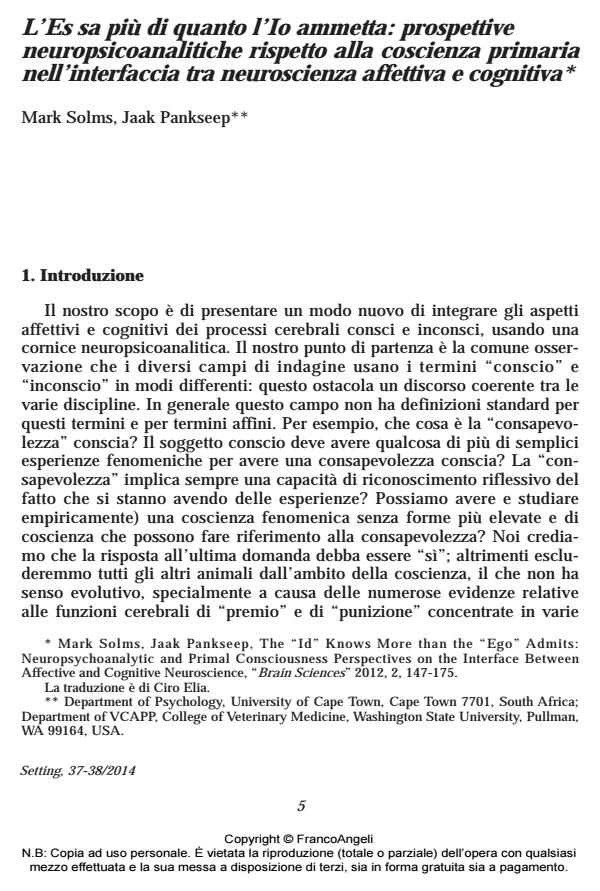L’Es sa più di quanto l’Io ammetta: prospettive neuropsicoanalitiche rispetto alla coscienza primaria nell’interfaccia tra neuroscienza affettiva e cognitiva
Journal title SETTING
Author/s Mark Solms, Jaak Pankseep
Publishing Year 2015 Issue 2014/37-38
Language Italian Pages 38 P. 5-42 File size 659 KB
DOI 10.3280/SET2014-037001
DOI is like a bar code for intellectual property: to have more infomation
click here
Below, you can see the article first page
If you want to buy this article in PDF format, you can do it, following the instructions to buy download credits

FrancoAngeli is member of Publishers International Linking Association, Inc (PILA), a not-for-profit association which run the CrossRef service enabling links to and from online scholarly content.
It is commonly believed that consciousness is a higher brain function. Here we consider the likelihood, based on abundant neuroevolutionary data that lower brain affective phenomenal experiences provide the "energy" for the developmental construction of higher forms of cognitive consciousness. This view is concordant with many of the theoretical formulations of Sigmund Freud. In this reconceptualization, all of consciousness may be dependent on the original evolution of affective phenomenal experiences that coded survival values. These subcortical energies provided a foundation that could be used for the epigenetic construction of perceptual and other higher forms of consciousness. From this perspective, perceptual experiences were initially affective at the primary-process brainstem level, but capable of being elaborated by secondary learning and memory processes into tertiary-cognitive forms of consciousness. Within this view, although all individual neural activities are unconscious, perhaps along with secondary-process learning and memory mechanisms, the primal sub-neocortical networks of emotions and other primal affects may have served as the sentient scaffolding for the construction of resolved perceptual and higher mental activities within the neocortex. The data supporting this neuro-psycho-evolutionary vision of the emergence of mind is discussed in relation to classical psychoanalytical models
- Il Cobra di Pugacëv. Interventi a sorpresa nella lingua del paziente: una efficace manovra affettiva Emilio Bertuletti, in SETTING 48/2024 pp.137
DOI: 10.3280/SET2024-048005
Mark Solms, Jaak Pankseep, L’Es sa più di quanto l’Io ammetta: prospettive neuropsicoanalitiche rispetto alla coscienza primaria nell’interfaccia tra neuroscienza affettiva e cognitiva in "SETTING" 37-38/2014, pp 5-42, DOI: 10.3280/SET2014-037001